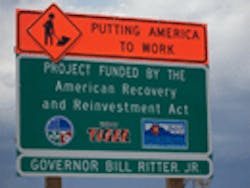Uncertain impact on freight from proposed mass transit policy shift
A proposed overhaul in federal mass transit policy by the DOT is drawing a mixed response from the freight community, with some seeing it as a way to help ease freight flows in urban areas, while others view it as a recipe for increased emissions and fuel consumption.
In remarks at the Transportation Research Board annual meeting, U.S. Transportation Secretary Ray LaHood said the proposed change requires mass transit funding guidelines be based on “livability” issues such as economic development opportunities and environmental benefits in addition to cost and time saved; the latter two currently being the primary criteria.
“If we’re really serious about creating livable, sustainable communities built around good transportation, then we must reform our current spending programs,” LaHood said in his speech. “We’re going to free our flagship transit capital program [Federal Transit Administration New Starts and Small Starts] from long-standing requirements that have allowed us only to green-light projects that meet very narrow cost and performance criteria.”
The change will apply to how the Federal Transit Administration (FTA) evaluates major transit projects going forward, LaHood said. In making funding decisions, the FTA will now evaluate the environmental, community and economic development benefits provided by transit projects, as well as the congestion relief benefits from such projects. The FTA plans to initiate a rulemaking process to govern this funding shift, he noted.
“This new approach will help us do a much better job of aligning our priorities and values with our transit investments” added FTA Administrator Peter Rogoff. “No longer will we ignore the many benefits that accrue to our environment and our communities when we build or expand rail and bus rapid transit systems.”
Some experts see this move as potentially beneficial for the freight industry, primarily by helping reduce traffic congestion.
“Such ‘livable’ transportation strategies should facilitate freight shipments to and from businesses as well as move people safely and reliably,” Janet Kavinoky, director of transportation infrastructure for U.S. Chamber of Commerce, told Fleet Owner.
“It seems logical that investments in transit could free up capacity on streets so that freight movers find it easier to get where they need to go on time and predictably and could be part of effective urban goods movement planning,” she added. “Ultimately, though, to improve freight flows in urban areas will require a multi-modal approach that includes road improvements and public transportation along with technology and freight-friendly operations.”
Others, however, are unsure if the environmental and energy-saving benefits touted by this mass transit policy shift will materialize.
“With the exception of the few high density systems in the country there is no evidence that transit saves energy or reduces emissions,” Noel Perry, principal of research firm Transport Fundamentals and senior consultant with FTR Associates, told Fleet Owner.
“Empty buses have very low seat-miles per gallon. In the same way the construction emissions and fuel consumption of heavy rail projects are never factored in,” he noted. “As with truck and rail one has to understand where transit is in a sweet spot and where it is not. I am afraid that FTA will make decisions favoring transit based on assumptions not on productivity informed data.”
Another hurdle is that the bulk of the America population still does not use mass transit even for daily commuting between home and work. According to the recent Statistical Abstract of the United States, compiled by the U.S. Census Bureau, 76.1% of Americans get to work by driving alone, while 10.4% carpool and only 4.9% use public transit.
About the Author
Sean Kilcarr
Editor in Chief
Sean Kilcarr is a former longtime FleetOwner senior editor who wrote for the publication from 2000 to 2018. He served as editor-in-chief from 2017 to 2018.
